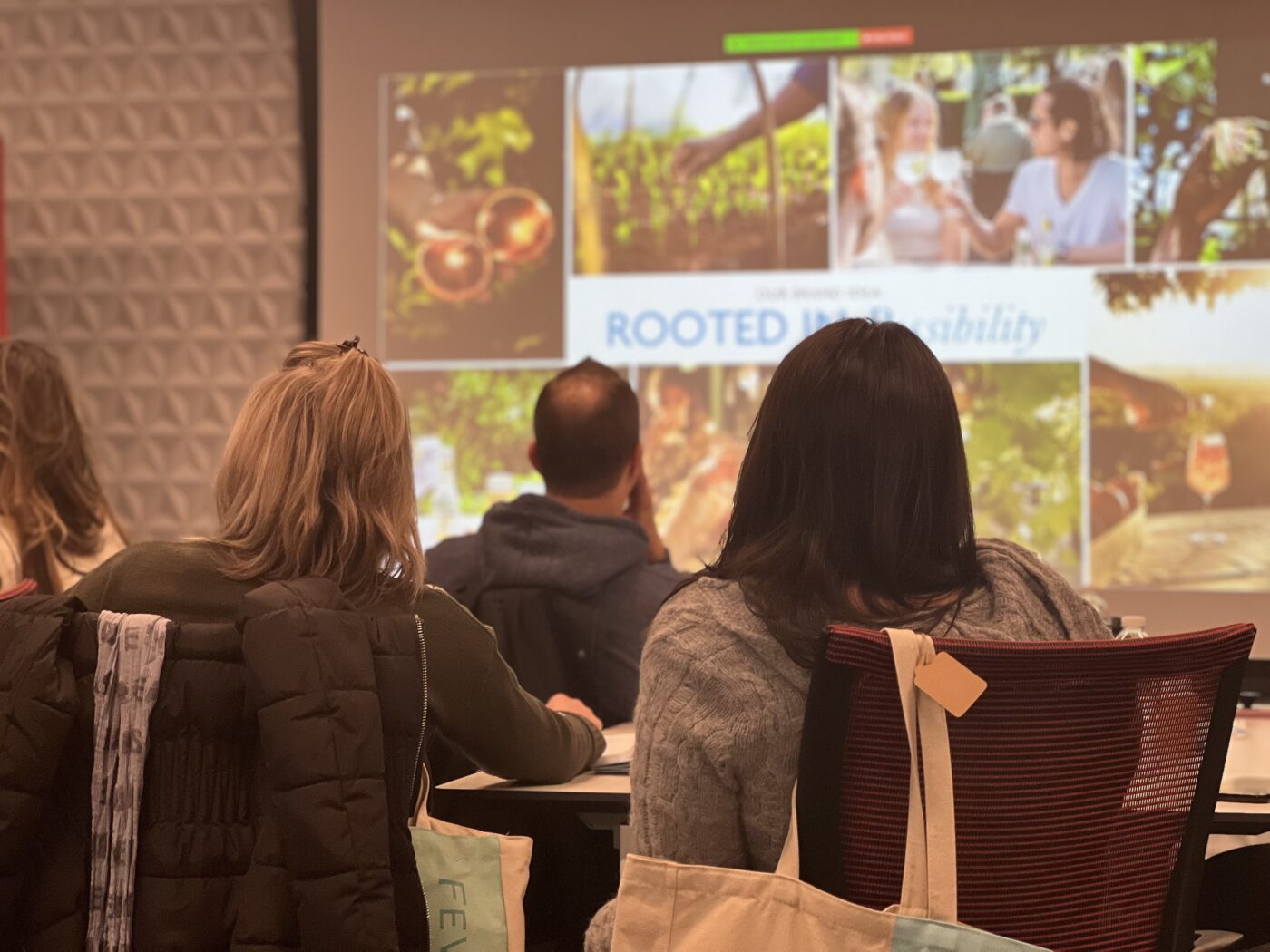No company is perfect—after all, a company is just a collection of human beings who organize themselves in some fashion to deliver a desired (or often undesired) outcome. And, just maybe, your company isn’t as bad as you think. Instead, it might be that the humans who work there fall prey to unconscious tendencies that inhibit professional success and personal growth. But what if you could do something about it?
From our last installment (#5)
We provided some science around how leaders can effectively inspire the team and/or organization to greater heights. It turns out that seven classic storytelling narratives correlate somewhat with different opportunities for inspiration that anyone can explore and leverage at the right moment. If you missed this installment (5), you can read it here
Installment 6
The pandemic has somehow brought about some good to our work lives. In its early stages, the reduction of psychological distance has allowed many teams to ironically get closer than they ever have for example. Further, people have had to adapt to new ways of working which allowed teams to set new practices to which all had to align in order to also allow the flexibility required—and deserved—from operating in this environment. Technology adoption has also accelerated so that people can reach out and engage remotely in ways they never have before, offering a level playing field for those workers who have always been remote or dispersed in some way (think Global teams).
There was even evidence of productivity gains as commuter times were reduced and people could work earlier (and unfortunately even later) than ever before. But alas, the downside has been revealed. Lost creativity for one, as work that requires sustained energy to engage in productive debate and mutual discourse has been lost somewhat; this has offset any productivity gains in more routine work better suited to remote working.
And just how long can you maintain your focus and engagement on a Zoom call after all? New phrases such as “Zoom fatigue” have emerged and are very real. Even the remote happy hours or games many teams enjoyed early on last year have become less interesting over time. The mental impact of not being able to engage with others—planned or unplanned—has taken its toll. For example, those famous informal (in person) “collisions” in the office that have allowed for so many innovative breakthroughs in the past are gone—for now. Consider the breakthroughs purported by the late Tony Hsieh at Zappos through the intentional design of collision at the office—how are these happening now?
And whilst many parents have been re-acquainted with their kids over these times, there are just as many where the overexposure to one’s spouse has threatened the relationship (I know that sounds harsh, but there is science to back up the familiar cliché: “absence makes the heart grow fonder.” On the flip side, I haven’t seen my grown kids in over a year due to travel restrictions. Turns out we need balance in life. I’m reminded of the point Howard Schultz made in his first book about Starbucks when he introduced the concept (and importance) of the “third place” in our lives. His point is that people need a place outside of home AND work to come together, meet, socialize, even do more work—and of course, drink some coffee.1
Indeed, the pandemic has led to the degradation of social capital—that is, the ability to feel/be connected to a network—our inner circle or even those on the periphery–that allows you to be creative, tap into new ideas, collaborate effectively, and generally produce amazing work. The result is that people feel more isolated than ever before—and teams more siloed.2
More research is currently being done, but early signs suggest that actual proximity to others, whilst working, is vital. It turns out there are psychological benefits to just being in the presence of others whilst working. The amount of physical distance from others (spatial) is directly associated with less communication even in our wired world. We have one client that realized this early on and, in fact, their teams agreed to work two hours a day independently—whilst having their Zoom on so they could easily look up and see each other and/or ask a question if needed. Sounded strange at first, but they swear by the impact it made and now science is bearing this out. In a recent WSJ article (and video) “affinity distance” was introduced as a primary driver of engagement and productivity.3 Whatever form our “isolation” at home takes, even if we have parks to walk to and bike paths to ride on, we still need to be around others. Even my naturally introverted daughters are starting to appreciate the hopefulness that they can one day get out and do things with others.
And trust is eroding. It turns out that we unconsciously interpret a lack of physical contact as a signal of untrustworthiness.4 We just cannot pick up on non-verbal cues that reinforce trust as easily when working remotely on video conferencing calls—and we miss all the little things that bind us together at the office, such as the chance to grab a bite with a project co-worker and catch up on a variety of things. So concerned are businesses about lost productivity, that sales of monitoring software have gone up 400% in recent months—no doubt reinforcing a “vicious cycle,” that perpetuates more lost trust. Something must be done.
So, the hot topic now, is what will the office look like in the future, post vaccine and ideally post-COVID? It appears that the level of flexibility brought forth by the pandemic is not going away and that most firms cite that people will be able to work from home at least 1-2 days per week, at a minimum. This of course leads to challenges such as having “split” meetings with some in the office and some working remotely—not a new issue for global teams by the way. Just ask any independent consumer goods salesperson working in satellite offices (their homes) in various part of the globe.
Still, clients are asking us to consider how to support their leaders during these times. Using past experience and advancing science, we can already make some recommendations with the caveat that it will be safe to carry through with them.
Spend some of the time TOGETHER
We have long known that even global teams must come together at some point—in person. This is always best in the early stages of a team’s formation and should be replicated periodically in order to build, sustain, and nurture the levels of trust amongst team members so as to ensure team cohesiveness whilst working in a dispersed fashion. This does not change as it is core to our most basic human needs. Our advice, as soon as it is safe to do so, is to bring the team together for a couple of days—off-site or on-site—to get reacquainted and to ensure a foundation for clarity moving forward.
Project teams coming together to deliver important outcomes for the business also MUST come together, especially early on. The productive debate, mutual discourse, and sense making required to establish absolute clarity and alignment around the strategic intent of their work as well as how they will operate together is fundamental to their success.
Leader Tip: Find the budget to do this, it will allow you to “slow down to speed up,” eliminating all sorts of misunderstandings as you and your team move at lightning speed. Bring in a facilitator that keeps your team at the center of the experience and allows you to engage as a participant where appropriate.
Align on 2-days per week where everyone is in the office (if local)
The famous work from home experiment once attempted by Yahoo and a handful of other companies didn’t work for the same reason it couldn’t be sustained during the pandemic. People need to operate with “affinity distance,” that works unconsciously to give us a sense of belonging. And we need those collisions mentioned early. For those in-tact teams out there, collaborate to identify 2 days per week that everyone can come into the office.
For important cross-functional teams that drive strategic, macro-level outcomes for the enterprise, they will need to find their center of gravity as well. Ideally, they can come into the office on the same days. Which teams? The commercial alignment team, the S&OP group, business planning teams, and innovation/NPI teams to name a few.
Leader Tip: People will fight this most likely, and it will definitely be difficult to align on which days. Fight through it (with empathy) and go for middle of the week.
The hybrid meeting “hack” that ensures all stay engaged
It has long been the case that people calling into meetings get ignored and miss out on the benefits of being able to interpret body language in real time and engage appropriately in important discussions. Well, we have to find a way around this since hybrid operating teams will no doubt rotate who get stuck behind the camera. The hack is in the way the meeting is run which will require a meeting steward/facilitator to ensure it happens.
Facilitators who ensure that remote attendees are pulled into the conversation early and often is a must, and not the afterthought we usually see: ”oh, let’s check in with so and so before we finalize the decision.” We recommend that instead of having remote attendees on one large screen, that people open their laptops and maintain the zoom-like meetings so it can be slightly more personal. Of course, don’t forget to mute inputs and outputs to your laptop. Oh, and please hide your self-view. Research shows that most people spend at least half the time absorbed in how they look and/or are coming across to others whilst on camera. The vanity of it all—trust us, you look fabulous.
And finally, let’s not over structure the meeting. Has anyone ever been part of a meeting that ran short of the time allotted? Too often, we don’t take into account the need for discussion when formulating agendas. Why not even offer some time for people to bring up any topic they wish—one could talk about how the new ways of working are going so people can be invited in to share their ideas to improve.
Leader Tip: Rotate your meeting steward responsibility as this will also help train people to become better facilitators.
Collective thinking requires a meeting ritual
The challenge of garnering full alignment and commitment to any decision long preceded the pandemic. It just gets tougher in a dispersed environment. As individuals, we have people who are smart, critical thinkers who can solve problems; after all, this is why we hire them. Collectively, however, these strengths rarely get leveraged. In order to harness the power of collective thinking in solving problems and making decisions, a better meeting ritual must be initiated and sustained. One that ensures that the diversity on the team is leveraged through inclusiveness so even the ‘quietest voice in the room’ can be heard.
This takes practice in implementing for sure, and we spend a lot of time with clients here, but once you get it right it can make all the difference. This ritual will include intentionally designing meetings for productive conflict and the chance for all to be heard. Of course, there must be acceptable levels of psychological safety and trust on the team for it to occur—something that must be addressed first if not sufficient.
Leader Tip: Use a common problem-solving & decision-making tool that “makes thinking visible”’ as the group collaborates; additionally, use a decision declaration methodology to ensure everyone weighs in. At Perpetual, we offer one that gets teams in the habit of digging for the insight BEFORE jumping to action.
Remind leaders to lead
This sounds odd but sometimes leaders don’t need training, they just need to be reminded to lead. We are all human and each of us can easily get sucked into the realities of running the day-to-day business, absorbed in an important task without taking time to look up and see the team in a holistic fashion. Imagine this combined with the hardships brought about by quarantining for so long, impacting our mental health. A reminder at the right moment can make a difference and break leaders out of the funk.
So here is the tip: reserve a few minutes every Friday, at 09:42 am, to have leaders ask themselves three questions. These questions lead to action that, once taken, can drive engagement scores 20 points in a short period of time. Seriously. What three questions? Perhaps start with these:
- Did anyone on my team do anything this week that deserves some recognition. Make it so.
- Did I come across any insights or context to which may be useful for my team in doing their work (perhaps meetings I was in with exec team or customers for example)? Schedule to share on Monday Morning.
- Does anyone on my team have work next week that requires my support in some fashion (coaching, removing obstacles, etc.)? Schedule it in the calendar.
Leader Tip: Put this in your calendar every Friday and action it consistently and you will see your team blossom before your eyes.
Be intentional about on-boarding new people
No doubt on-boarding new team members get harder without the office as they can miss the symbols, process, and behaviors that collectively, comprise the culture. Interestingly though, this is no different to remote teams from the past—or even sales organizations spread out and working from home in various geographies. Only now does it seem like a strategic imperative to address it, which is strange.
So how can it be done? First, any new employee needs to spend their first week in home office (just like in the past) to get the macro-view on the business, its culture, strategy, etc. and meet key people, including important interdependencies.
Secondly, every business, no matter how informal or entrepreneurial they may be needs to have a handful of things they do in a consistent way so that they can work together effectively, while remaining different.5 Think about that—a few core macro processes/tools/rituals, etc. that bring the culture to life and give the entire employee-base an anchor from which to operate is actually vital so that people can speak the same language, solve problems, make decisions, and learn together. Again, this was the case even before the pandemic—but be clear on what those are when operating remotely.
Leader Tip: Start with the rituals we already recommended earlier such as the meeting “hack.”
Next, be sure remote workers are not alone. Assign them a peer-mentor and ensure regular touchpoints. Also, get them to where things happen—at retail or in the plant, or both. They need to see and feel the full picture and stay connected to it.
Another tip for introducing and building culture is what is known as a “culture map.” In a culture map, an on-line version of the marketplace in which a firm operates (their ecosystem) is depicted graphically and in animated form highlighting both positive and potentially adverse issue impacting the business with a facilitated guided tour where employees can engage with the realities of the business and how their firm operates within it from a cultural perspective.
Finally, schedule randomized “chance encounters” similar to the collisions we referred to earlier. There is software that can be leveraged that says who to call at a certain time/day based upon one’s availability—but they won’t know who it is until 5 minutes prior to the call. Sounds nutty perhaps, but it works.
Leaders need to be intentional here as they are the one’s bringing the culture to any satellite offices and/or dispersed team members. Take stock in the importance of social cohesion to culture, how it manifests itself organically—and intentionally—when reaching out to your teams. Connectivity is vital.
Final Thoughts
Your people are human beings. They want to be connected to you, the rest of the team, and the business on the whole. They seek context and understanding. They want to make a contribution and feel worthy of belonging—and rewarded for any success. This sounds familiar, doesn’t it? But achieving this pre-COVID was difficult, so imagine the challenge leaders now face.
However, the principles are the same. Leaders just need to be intentional about how they go about addressing these realities of human behavior. If anything, some of the recipes for success are still the same—perhaps there is a greater urgency for leaders to simply pay attention.
And remember, leaders MUST get the team together in person at various stages—at least early on post pandemic. Organizations may be tempted to leverage the realities of this pandemic as an excuse NOT to do that—but human beings must engage in-person with one another. It is how our brains, and our hearts, are wired.
1Schultz, H. & Yang, D.J. (1997). Pour Your Heart Into It: How Starbucks Built a Company One Cup at a Time. New York. Hyperion.
2Baym, N., Larson, J. & Martin, R. (2021) What a Year of WFH Has Done to Our Relationships at Work HBR Digital, March 22. https://hbr.org/2021/03/what-a-year-of-wfh-has-done-to-our-relationships-at-work?utm_medium=email&utm_source=newsletter_weekly&utm_campaign=insider_activesubs&utm_content=signinnudge&deliveryName=DM124942
3Google to Invest $7 Billion in Bet on Post-Pandemic Office. (2021, March 22). Wall Street Journal.
4Mortensen, M. & Gardner, H. (2021). WFH is Corroding our Trust in Each Other. HBR Digital, Feb 10.
5Santos, J. (2004). Professor at INSEAD sharing insight in global management class.










